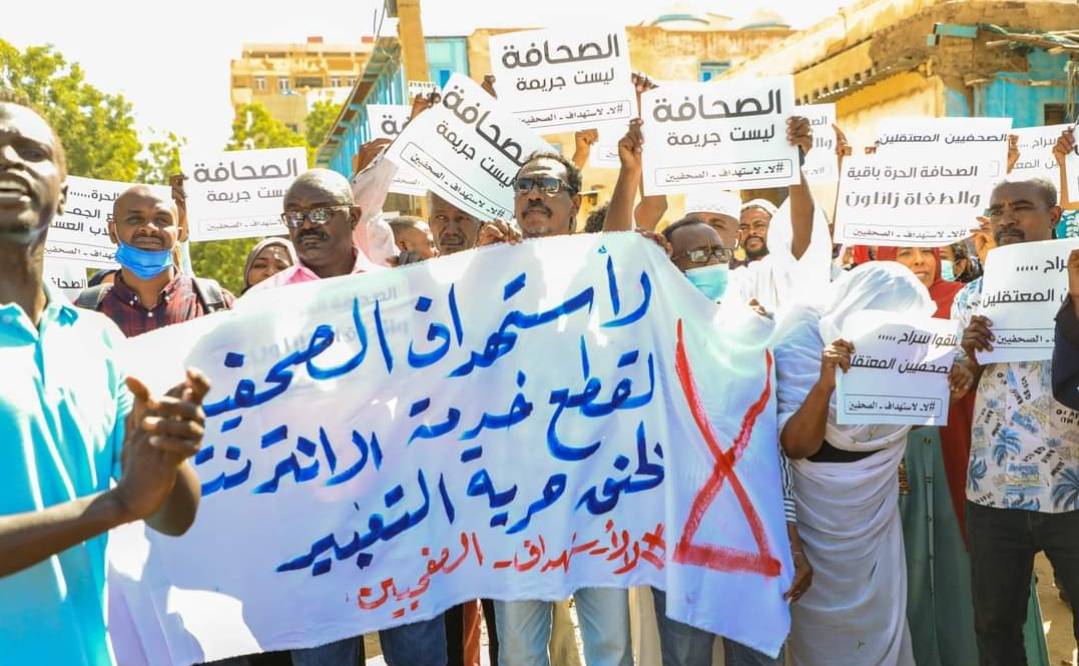
Government Initiative to Revive Sudan’s Press – A Lifeline or an Attempt to Tame the Media?
Khartoum, August 13, 2025, Sudan Tribune - Since war erupted between the Sudanese Armed Forces (SAF) and the Rapid Support Forces (RSF) on April 15, 2023, more than 20 print newspapers have gone out of circulation, plunging the country into an information blackout and cutting the world off from an accurate picture of events inside Sudan.
The shutdown was inevitable given the widespread destruction of newsrooms and printing presses in Khartoum. Hundreds of journalists have since been displaced or forced into exile; many abandoned the profession altogether, turning to informal work to feed their families.
Against this backdrop, the government now says it plans to resume newspaper publishing.
According to informed sources who spoke to Sudan Tribune, the Khartoum state government has already begun preparations. In July, meetings were held between a government-appointed newspaper distributor and a number of publishers, with Al-Tayar, owned by Osman Mirghani, among the first to signal readiness to return.
When the war broke out, the shock hit readers, publishers, and editors alike. That morning, papers rolled off the presses with headlines focused on last-minute mediation efforts: “Jibril, Minawi, and Agar Lead Mediation” and “International Community Voices Concern Over Military Escalation.” Ironically, those headlines themselves betrayed how close the country was to all-out war.
From pens to pavements - the human cost in numbers
Walid Al-Nour, Social Affairs Secretary of the Sudanese Journalists Syndicate, painted a grim picture for Sudan Tribune: all media outlets - including 26 print newspapers and five printing presses - shut down on the first day of the conflict.
Of the roughly 1,500 journalists working in the public and private sectors, he said, 90% were unemployed by August 2025. “Only 10% are still working, and most have lost their savings. Many now sell goods in the streets or take on casual jobs to support their families,” he noted.
A mere 5% - mostly those employed by TV channels and international news agencies - still receive regular salaries. Al-Nour was sharply critical of the lack of protection and support for Sudanese journalists from both domestic and international institutions, especially compared to the solidarity shown to their peers in other conflict zones. “The real scale of this disaster has not been reflected in media coverage,” he said.
Heavy losses - and cautious hopes for a return
Before the December 2018 revolution, Sudan had close to 40 print titles. According to Al-Tayyar editor-in-chief Osman Mirghani, the post-war media landscape has shifted almost entirely online - though quality varies greatly, from one-person mobile phone operations to outlets like Al-Tayyar that have retained professional editorial structures and daily meetings.
He said the paper alone suffered an estimated 400,000 in losses, after its headquarters was destroyed and all equipment — including state-of-the-art broadcast gear imported just weeks before the war — was looted.
Yet Mirghani remains optimistic: “The army has a printing press that only needs minor maintenance, another press in Bahri is ready, and the distribution company is in place. We’ve already started preparing for a return to print.”
Government plans and coordination
Official reports say newspaper offices suffered more from looting than from structural damage, and that the Baka and CTP presses are being readied for production. Sudan Tribune learned that Osman Mirghani and former journalists’ union head Al-Sadiq Al-Riziqi have been tasked with coordinating the relaunch. Authorities say they have secured printing paper and have asked publishers to submit lists of their current staff.
The challenge of independence
For Ashraf Abdelaziz, editor-in-chief of Al-Jareeda, any return is “virtually impossible” under current conditions - and any government aid would likely come at the cost of editorial independence.
“The greatest danger,” he warned, “is the government paying journalists’ salaries. If it does, it will inevitably want influence over coverage. That could turn most newspapers into platforms for hate speech and war propaganda, undermining their role in informing the public.”
Abdelaziz stressed that the current crisis dwarfs all previous ones: the war not only halted publication but “wiped out the entire infrastructure. Offices were ransacked, equipment stolen, and even printing press metal sold for scrap.” The few outlets that have survived online, such as Al-Jareeda, Al-Sudani, and Al-Tayyar, operate at a fraction of their former capacity.
Key questions still unanswered
Sudanese Journalists Syndicate president Abdelmonim Abu Idris supports the principle of bringing back any media outlet that would rehire journalists. But he posed fundamental questions left hanging by the government initiative: “Will these papers be funded by the state or the private sector? And on what terms will new contracts be made with journalists whose careers have been destroyed?”
He emphasized that media offices and printing presses were among the first casualties of the war - with up to 90% of them destroyed or looted — making the question of how to bring them back both urgent and complex.
- The Sudan Media Forum and its member organizations publish this Sudan Tribune report to examine whether a government-led return of print newspapers is realistic after the physical destruction of media infrastructure, the displacement and loss of livelihoods among journalists, and the ongoing war - and what such a move would mean for the independence and professionalism of Sudan’s press.


